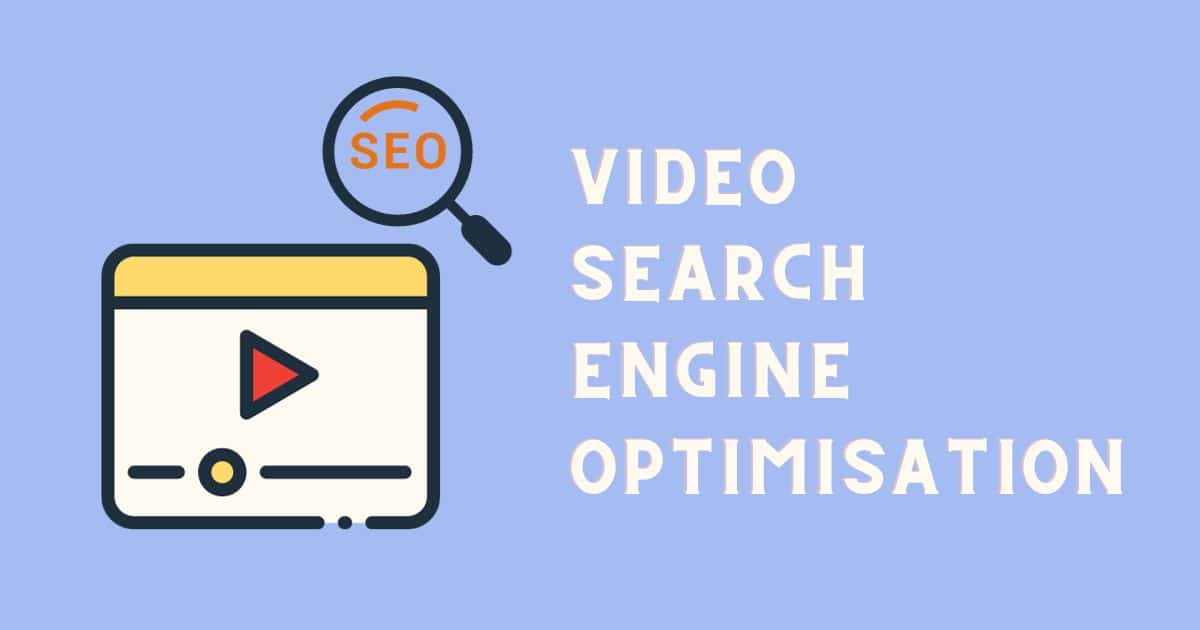Improving lead response time is crucial for any business that wants to succeed in today’s fast-paced market. A lead is a potential customer who has shown some interest in your product or service and has shared their contact details with you.
The time between a lead expressing interest and your response can make or break a potential sale. Therefore, it is important to understand what a good lead response time is and how to improve it.
Let’s get started!
What Is A Lead Response Time?
Lead response time is the average time it takes for a business to respond to a lead after they have expressed interest in their products or services. This metric measures the lead follow-up time after the prospect has made contact through an email, call, or web form. A lead is a potential customer who has shown interest in your business and has provided their contact information for further follow-up.
Lead response time is a critical metric that can significantly impact a company’s bottom line. The faster you respond to a lead, the more likely you are to convert them into a customer. According to a study by Harvard Business Review, companies that respond to leads within an hour are 7 times more likely to qualify the lead than those who respond after an hour, and companies that respond within 5 minutes are 10 times more likely to qualify the lead than those who respond after an hour.
Meaningful conversations with leads are crucial to converting them into paying customers. The longer it takes for you to respond to a lead, the less likely they are to engage in a meaningful conversation with you. This is because the lead may have already found another business that responded faster and provided them with the information they needed.
Initial contact with a lead is the first step in the lead response process. It is important to make a good first impression and respond to the lead promptly. If you fail to respond to the lead in a timely manner, they may lose interest in your business and move on to your competitors.
Importance of a Good Lead Response Time
Responding to leads in a timely manner is crucial for businesses to achieve their sales targets, improve their conversion rates, and increase their revenue. A good lead response time can make all the difference in converting a potential customer into an actual customer.
When you respond to leads quickly, you demonstrate that you value their time and are committed to providing timely and effective service. This can lead to increased customer satisfaction and build trust and loyalty with your customers.
In addition to improving customer satisfaction, fast lead response times also give you a competitive edge over your competitors. Companies that respond to leads within an hour are seven times more likely to have a meaningful conversation with a decision-maker than those who respond after an hour.
Industry Benchmarks For Lead Response Time
Knowing the industry benchmarks for lead response time can help you determine how your business is performing compared to your competitors. According to a study by Geckoboard, the average lead response time varies significantly by industry. Healthcare had the slowest average lead response time of 2 hours and 5 minutes, while telecommunications performed the best with an average response time of 16 minutes.
Another study by ServiceBell found that the average lead response time is 47 hours. This is a surprisingly long time, considering that the likelihood of reaching shoppers within five minutes is 10 times higher than if you were to let 10 minutes elapse. The same study found that just 27% of leads get contacted at all, which means that there is a lot of room for improvement in lead response time.
If you’re wondering how your lead response time stacks up against your competitors, HubSpot has compiled a list of industry benchmarks based on a study of over 15,000 businesses. The median lead response time across all industries is 5 hours and 26 minutes. However, some industries have much faster response times, such as the software industry with a median response time of just 1 hour and 24 minutes. Other industries, such as healthcare, have much slower response times of over 24 hours.
It’s worth noting that these benchmarks are just that – benchmarks. They should be used as a guide to help you determine how your business is performing relative to your competitors. However, every business is unique, and what works for one industry may not work for another. The most important thing is to continually monitor and improve your lead response time to ensure that you’re providing the best possible customer experience.
How To Measure Lead Response Time
Measuring your lead response time is crucial in determining how efficient your sales process is. If you measure your lead response time, you will identify areas for improvement and make changes to your sales process to increase your chances of converting leads into customers.
To calculate your lead response time, you need to track the time it takes for your sales team to respond to a lead after they have submitted a form or made an enquiry. Here are the steps to manually measure your lead response time:
- Identify the start time: The start time is when the lead first submits a form or makes an inquiry. This can be tracked using a timestamp or by setting up a trigger in your CRM system.
- Identify the end time: The end time is when your sales team responds to the lead. This can be tracked using a timestamp or by setting up a trigger in your CRM system.
- Calculate the lead response time: Subtract the start time from the end time to determine the lead response time.
For example, if a lead submitted a form at 10:00 AM and your sales team responded at 10:15 AM, your lead response time would be 15 minutes.
To streamline this process, you can use lead management software to automate the tracking of lead response time. This software can automatically track the start and end time of each lead and calculate the lead response time for you.
Measuring your lead response time is just the first step in improving it. Once you have identified your lead response time, you can set goals for improvement and implement changes to your sales process to reduce your lead response time and increase your chances of converting leads into customers.
Strategies To Improve Lead Response Time
Improving lead response time is crucial for any business that wants to increase its conversion rates and generate more revenue. Here are some strategies that can help you improve your lead response time:
- Automate Everything You Can
Automating your lead response process can save you time and increase your efficiency. You can use automation tools to send out personalized emails, follow-up messages, and reminders to your sales team. This can help you stay on top of your leads and ensure that no prospect falls through the cracks.
- Assign Leads Wisely
Assigning leads to the right sales rep is essential for improving your lead response time. You should assign leads based on their interests, needs, and behaviour. You can use lead scoring software to prioritize your leads and assign them to the most suitable sales rep. This can help you improve your conversion rates and close more deals.
- Use Multiple Communication Channels
Using multiple communication channels can help you reach out to your leads faster and improve your response time. You can use email, phone, chat, and social media to communicate with your prospects. This can help you connect with your leads on their preferred channel and increase your chances of closing a deal.
- Prioritise Leads
Prioritizing your leads can help you focus on the most promising prospects. Use lead scoring software to assign scores to your leads based on their behaviour, interests, and demographics. This can help you prioritize your leads and focus on the ones that are most likely to convert.
- Empower Your Sales Reps
Empowering your sales reps can help them respond to leads faster and more effectively. You can provide them with the right tools, training, and support to help them close more deals. Consequently, you will improve your lead response time and increase your conversion rates.
- Set Team and Individual Goals
Setting team and individual goals can help you improve your lead response time and motivate your sales team. You should set goals for the number of leads contacted, response time, and conversion rates. This can help you track your progress and identify areas for improvement.
- Offer Rewards
Offering rewards can help you incentivize your sales team. You should offer bonuses, commissions, or other incentives to your sales reps for meeting or exceeding their goals. This can help you motivate your team and improve your conversion rates.
Improving your lead response time requires a combination of effective strategies, tools, and processes. If you implement these tips, you will improve your lead response time, increase your conversion rates, and generate more revenue.
Role Of Technology In Improving Lead Response Time
Technology plays a crucial role in improving lead response time. With the help of technology, it’s possible to automate various tasks, track leads, and provide faster responses. Here are some ways technology can help you improve your lead response time:
Email Automation
Email automation is a powerful tool that can help you respond to leads quickly and efficiently. With email automation, you can set up automatic responses to new leads, so they receive a response within minutes of contacting you. This not only helps you respond faster but also ensures that your leads feel valued and appreciated.
Call Tracking
Call tracking is another technology that can help you improve your lead response time. With call tracking, you can track the source of your leads and respond to them accordingly. For example, if you receive a lead from a specific channel, you can prioritize that lead and respond to it faster than other leads.
Chatbots
Chatbots are becoming increasingly popular in lead response management. With chatbots, you can provide instant responses to your leads, even outside of business hours. Chatbots can help you qualify leads, answer common questions, and even schedule appointments.
Web Forms
Web forms are a great way to capture leads on your website. With the help of technology, you can set up web forms that automatically send leads to your sales team. This ensures that your sales team receives leads quickly and can respond to them in a timely manner.
SMS
SMS is a powerful lead response management tool. With SMS, you can send instant responses to your leads, even when they’re on the go. SMS can help you qualify leads, schedule appointments, and even close deals.
Lead Response Management Software
Lead response management software helps you track leads, prioritise them, and respond to them quickly. With lead response management software, you automate various tasks, track leads in real time, and even assign leads to specific sales teams.
Understanding Different Lead Channels
As a professional in sales and marketing, you know that there are different lead channels available for businesses to get valuable prospects. These channels can be inbound or outbound, and each one requires a different approach to lead response time.
Inbound Channels
Inbound lead generation campaigns are designed to attract potential customers to your website or business. These leads are valuable because they have already shown an interest in your product or service. Inbound leads can come from various sources, such as search engines, social media, and email marketing.
When it comes to inbound leads, it’s essential to respond quickly. The optimal inbound lead response time is five minutes or less. The sooner you respond, the better your chances of winning the deal. Therefore, you must have a lead routing system in place to ensure that leads are assigned to the right sales reps and responded to promptly.
Outbound Channels
Outbound channels, on the other hand, refer to the efforts made by businesses to reach out to potential customers. These channels can include phone calls, email marketing, and direct mail campaigns.
When dealing with outbound channels, it’s crucial to be professional and respectful. Keep in mind that your potential clients may be receiving similar offers from your competitors. Therefore, it’s essential to differentiate yourself by providing excellent customer service and prompt responses.
It’s also important to use multiple communication channels when dealing with outbound leads. For example, if you’ve sent an email, follow up with a phone call to increase your chances of getting a response.
The Impact Of Lead Response Time On Sales And Marketing
Lead response time is a crucial factor that determines the success of your sales and marketing efforts. Businesses that respond to leads within five minutes are much more likely to convert that lead into a sale than those who respond in 30 minutes or more. This highlights the importance of a quick response time in lead conversion.
When a potential customer contacts your business, they are likely to be considering multiple options. If you do not respond quickly, they may move on to your competition. This is especially true for B2B companies, where the sales cycle is longer and the competition is higher. A quick response time can help you engage with the customer, build trust, and establish yourself as a reliable source.
A slow response time can also be a major pain point for potential customers. They may feel ignored or undervalued, which can lead to a negative perception of your business. This can be especially damaging if the customer is a new lead, as you want to make a good first impression.
In addition to phone calls and emails, video is becoming an increasingly popular way to engage with potential customers. A quick response time to a video inquiry can help you stand out from the competition and provide a more personalised touch.
To improve your optimal lead response time, you can use lead distribution software to automatically assign leads to sales reps. This can help ensure that leads are contacted quickly and efficiently. It can also help you track the progress of each lead through the sales funnel.
Final Thoughts: Lead Response Time
Responding to leads quickly can significantly increase your chances of converting them into customers. On the other hand, a slow response time can lead to missed opportunities and lost revenue.
To improve your lead response time, you should adopt a scientific mindset and establish benchmarks to measure your progress. Automating your lead management process can also help you respond to leads quickly and efficiently. Assigning leads wisely, using multiple communication channels, and prioritising leads based on their potential value can also help you improve your lead response time.
Empowering your sales reps, creating a collaborative environment, setting team and individual goals, offering rewards, and gathering feedback can also help you improve your lead response time. By implementing these best practices, you can ensure that your business is responding to leads quickly and efficiently, and maximising your chances of converting them into customers.
Remember, improving your lead response time is an ongoing process that requires constant monitoring and optimisation. By staying focused on this critical metric, you can help your business achieve long-term success and growth.













